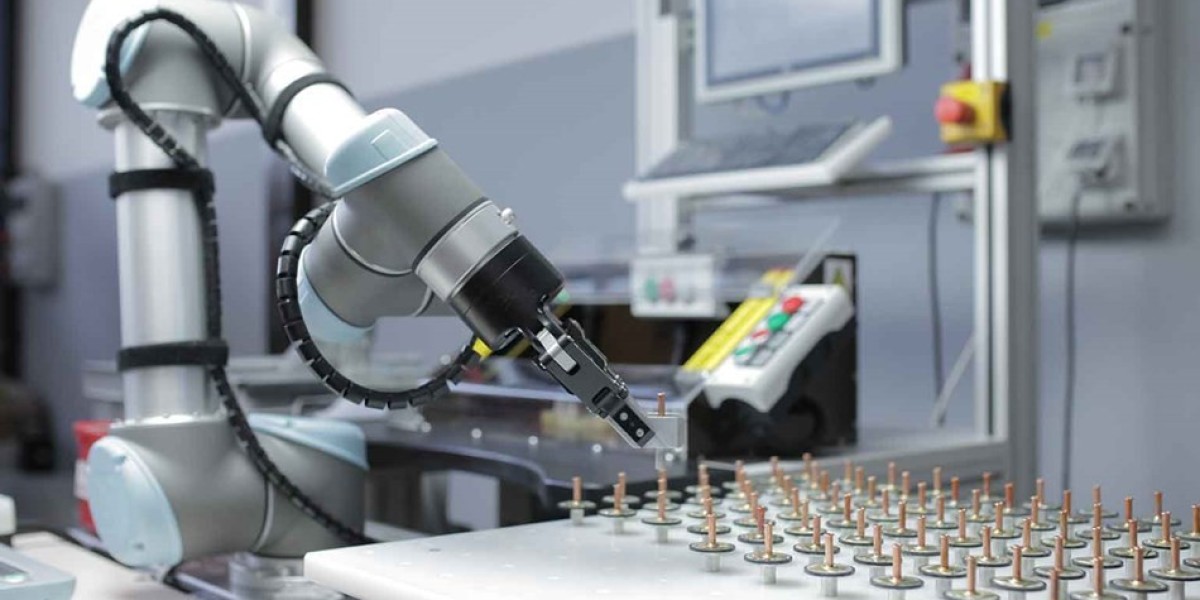The automation industry has seen a remarkable transformation in recent years, with collaborative robots, commonly referred to as "cobots," standing out as one of the most disruptive innovations. Unlike traditional industrial robots that operate in isolation, cobots are designed to safely and efficiently work alongside humans. This collaboration between robots and humans is one of the key factors driving their rising adoption across industries like manufacturing, logistics, healthcare, and agriculture. The Collaborative Robots Market is expected to expand exponentially in the coming years, owing to various technological advancements and significant shifts in workplace dynamics.
The Current State of Collaborative Robots
Collaborative robots are engineered to enhance productivity while ensuring safety in environments where human operators are present. Traditional robots often require barriers or cages for safety, preventing interaction with humans. However, collaborative robots are designed with sensors, vision systems, and other safety features that allow them to operate safely in close proximity to workers. These robots are generally lightweight, versatile, and easy to program, making them suitable for small and medium-sized enterprises (SMEs), which may not have the resources to invest in traditional automation systems.
In the manufacturing sector, for instance, cobots are taking over repetitive tasks such as assembly, packaging, welding, and quality inspection. These robots are significantly improving productivity and operational efficiency. Additionally, cobots are not limited to assembly lines – their potential applications have extended to customer service, medical procedures, and even agriculture, all of which further highlight the diverse potential of this technology.
Key Drivers of Collaborative Robots Adoption
Several factors contribute to the increasing demand for collaborative robots across various industries. First, the decreasing cost of robotic components has made automation more accessible to smaller businesses. As cobots become more affordable, industries that previously could not integrate automation are now adopting them.
Second, the need for labor force enhancement due to an aging population is also spurring cobot adoption. Industries such as healthcare are seeing a surge in demand for robotics that can alleviate the burden on healthcare workers. Cobots can assist in tasks like elder care, medication dispensing, and precise surgeries, reducing human error and improving efficiency.
Third, the continuous advancements in artificial intelligence (AI) and machine learning have made cobots smarter. These robots are now equipped with adaptive learning features that enable them to improve their performance over time. Enhanced with real-time data processing, collaborative robots can handle complex tasks that were previously impossible for traditional robots.
Moreover, the shift in workplace culture to more flexible and inclusive environments is driving the adoption of cobots. Unlike traditional automation systems, which can sometimes be intimidating or complex to interact with, cobots are designed to be more intuitive. Human workers feel comfortable operating or working alongside these robots, contributing to improved workforce dynamics.
Future Market Potential
The Collaborative Robots Market holds significant potential for expansion as businesses look to meet the demands of evolving consumer behaviors and increase operational efficiency. One of the most noteworthy trends is the expansion of cobots into industries beyond manufacturing. Industries like logistics and supply chain management have started incorporating collaborative robots for order picking, sorting, and even last-mile delivery, improving overall efficiency and reducing operational costs.
Additionally, as environmental sustainability gains more attention worldwide, cobots can help companies adhere to green manufacturing practices. Their ability to optimize resource consumption and streamline processes contributes to reducing waste and improving energy efficiency. For example, collaborative robots can assist in reducing energy consumption by performing tasks faster and more accurately.
The advent of 5G connectivity will also play a pivotal role in the growth of the cobot market. With 5G’s low latency, real-time communication between robots and machines will be seamless, allowing for smarter, more efficient operations in diverse settings.
Challenges to Overcome
Despite the tremendous potential of the collaborative robot market, certain challenges must be addressed before it can achieve its full market potential. A primary concern is the need for interoperability among various robotic systems and devices. As manufacturers adopt different types of robots, ensuring compatibility and streamlined communication across systems is a vital hurdle that needs to be overcome.
Another challenge is ensuring that cobots adhere to regulatory and safety standards. While cobots are generally safe to work alongside humans, guidelines and regulatory frameworks must be updated to include these emerging technologies.
Conclusion
The collaborative robot market is poised for rapid growth as businesses recognize the immense value in leveraging automation while maintaining close interaction with human workers. With their flexible applications, affordability, and growing capabilities, cobots represent a significant opportunity across industries. By addressing key challenges and driving further innovation, the Collaborative Robots Market has the potential to reshape how companies approach productivity and operations in the future.



![Vision Sensing Algorithms Market Size, Share [2024-2032]](https://insta.tel/upload/photos/2024/08/y7qHbbuWWD8cBxnYvQpe_09_221342f268f32902bd7dab2d62b03a7f_image.jpg)